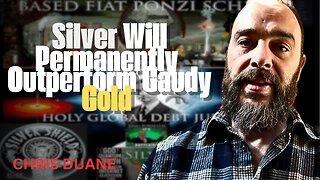Premium Only Content

History of Pakistan
Ancient Civilizations: The region that is now Pakistan has a rich history dating back to ancient civilizations, including the Indus Valley Civilization (around 3300–1300 BCE).
Muslim Rule: In the 7th century, Islam spread to the region through Arab conquests. Later, it was ruled by various Muslim dynasties, including the Ghaznavids, Ghurids, and Mughals.
British Colonial Period: In the mid-19th century, the British East India Company took control of the area, which later became part of British India.
Partition and Independence: In 1947, British India was divided into two independent nations, India and Pakistan, as part of a plan known as partition. Pakistan was established as a separate homeland for Muslims.
Early Years: Pakistan initially comprised two geographically separated regions, West Pakistan (present-day Pakistan) and East Pakistan (present-day Bangladesh). The early years were marked by challenges, including the 1947-48 war with India over Kashmir.
Constitution and Democracy: Pakistan adopted its first constitution in 1956 and has experienced periods of democratic rule interspersed with military coups.
1971 War and Bangladesh: In 1971, East Pakistan fought a war of independence against West Pakistan and became the independent nation of Bangladesh.
Nuclear Power: Pakistan became a nuclear-armed state in 1998.
Recent History: Pakistan has faced political and economic challenges but has made progress in various fields. It has been involved in conflicts with India, particularly over Kashmir. Terrorism and extremism have also been significant challenges.
Current Status: As of my last knowledge update in September 2021, Pakistan is a parliamentary democracy with a civilian government. However, the political situation may have evolved since then.
-
 LIVE
LIVE
Akademiks
1 hour agoKendrick Lamar Announces He Will Headline Superbowl 2025. Clowns Drake w/ sayin 'NO ROUND 2s'
3,012 watching -
 LIVE
LIVE
Grant Stinchfield
1 hour agoBallot Dumps, More Voters than Registered, Even Deleted Votes,,, It Looks Very Fishy!
664 watching -
 1:02:21
1:02:21
The Dan Bongino Show
4 hours agoTrump Makes His BOLDEST Moves Yet (Ep. 2370) - 11/13/2024
543K1.65K -
 1:02:59
1:02:59
The Rubin Report
2 hours agoCNN Host Forced to Intervene as Guest Loses His Cool as Republican Calmly States Facts
40.4K40 -
 UPCOMING
UPCOMING
The Boomer Effect
18 hours agoSocial Security - Simple and Smart
14 -
 24:06
24:06
Rethinking the Dollar
3 hours agoDigital Illusions of Wealth: Why Real Silver Matters More Than Ever!
3081 -
 1:37:01
1:37:01
Professor Nez
15 hours ago🚨LIVE President-elect Trump Meets with President Biden in the Oval Office
19.3K15 -
 2:00:38
2:00:38
Steven Crowder
4 hours agoLet that Sink In: This is why the Left Lost & Elon and Vivek Form New Trump Superteam
337K199 -
 LIVE
LIVE
Benny Johnson
3 hours ago🚨 DADDY'S HOME: Trump Meets Biden At White House LIVE Right NOW, Joe Surrenders Federal Gov to MAGA
15,700 watching -
 LIVE
LIVE
Midnight's Edge
2 hours agoThe TDS of our stars, and scandals of Wicked | MEiTM #639
238 watching